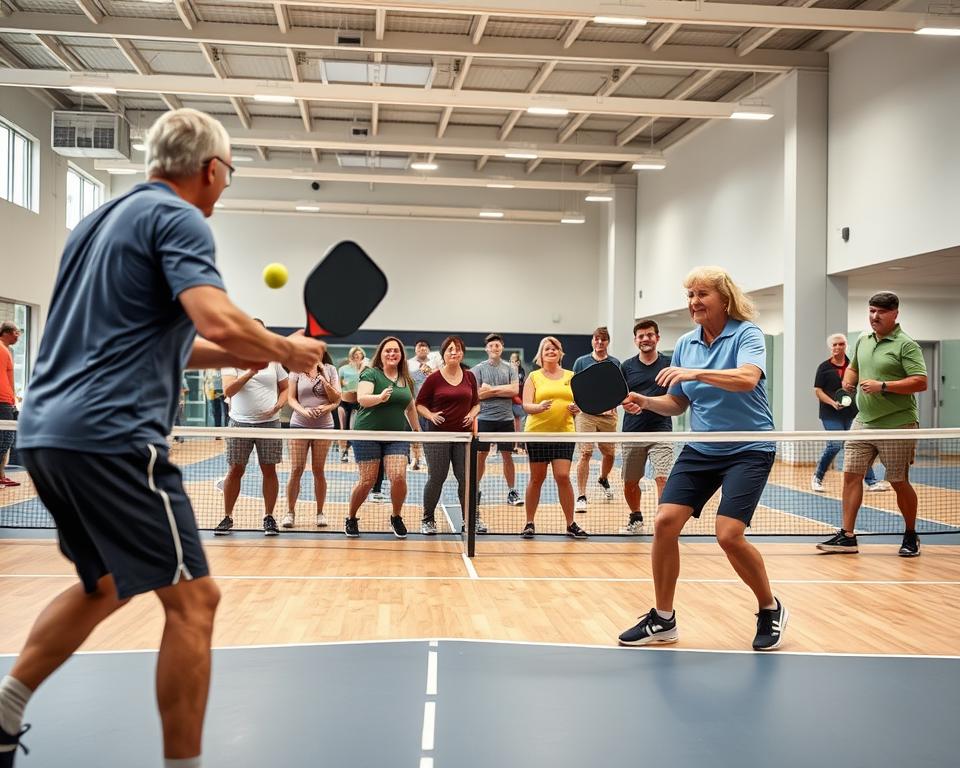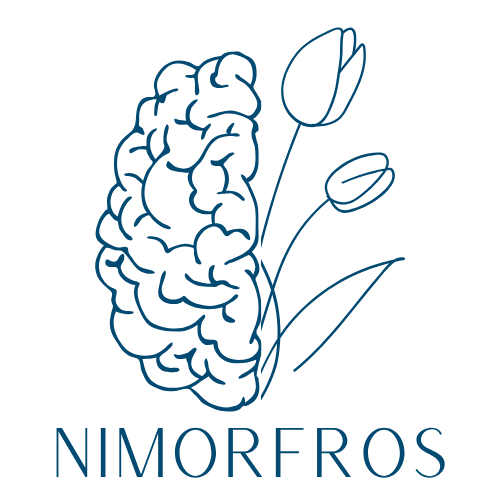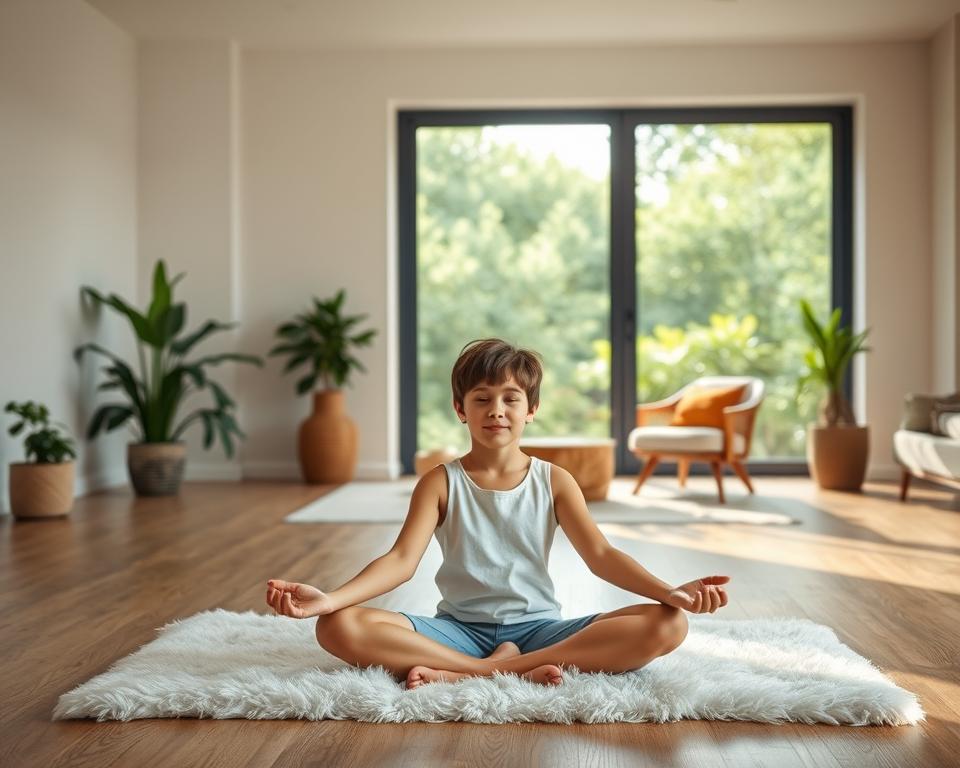Anúncios
Curious which new practices can actually fit your busy life—and which are just buzz?
This guide gives clear, evidence-informed information you can use now. You’ll read about vagus nerve work, cold plunges, hyperbaric oxygen, high-protein plans, colostrum, and the rise of community clubs like pickleball groups. Sources include ELLE, WellSteps, and SFIA reporting.
We focus on practical steps that respect your schedule, energy, and budget. Expect plain-English takeaways and honest safety notes. No miracle fixes. When a practice has risks or unknowns, we say so and advise talking with a clinician.
By the end, you can pick one or two ideas, set simple goals, and test them across a few days. Use this as a part of your core habits—sleep, movement, and balanced food—rather than a replacement.
Introduction: wellness trends 2025 that actually matter for your daily life
This guide helps you separate useful habits from noisy hype so you can try small changes that actually fit your day. It’s evidence-informed and practical. No miracle promises—just clear steps you can test safely.
Anúncios
Why trends rise now: culture, science, and practical habits
Culture and celebrity buzz often push an idea into the spotlight. At the same time, a new study or social program can make a practice seem urgent.
Sources like ELLE note viral interest in things such as vagus work and cold plunges, while WellSteps shows employers and employees shifting toward action-based programs and better mental health support.
How to read this guide: education first, no miracle fixes
We’ll interpret research carefully, flagging where evidence is early, small, or mixed. Use simple, low-risk ways to test an idea before investing time or money.
Anúncios
Talk to a licensed clinician for diagnosis or treatment questions. If a practice feels risky, stop and seek medical advice.
- Try a short breathing routine for stress before buying gear.
- Swap one meal to a fiber-forward recipe to see how your energy shifts.
- Track small changes for a few weeks to judge real benefit.
“Ask what problem a trend solves and whether it fits your routine.”
Mind-first wellness: stress, mental health, and your daily bandwidth
You don’t need long rituals to reduce overwhelm—short, evidence-based moves help.
Evidence-informed stress tools you can try safely at home
Start small. Try 4–6 slow breaths per minute, a five-minute body scan, or a ten-minute walk after a tense call.
Use tiny resets during the day: one minute of box breathing between meetings or a two-song stretch break to clear your head.
- Use free meditation or guided audio from apps’ free tiers or public libraries to build a habit before subscribing.
- Keep a one-week log: note stress peaks, what you tried, and any change in mood or productivity as an example of tracking.
- Pair solo practice with community—walk with a friend weekly for low-pressure support and accountability.
Know the limits: when to seek professional support
Mild stress often responds to at-home tools, but if it disrupts sleep, work, or relationships, get help. The APA and WellSteps note employers are adding mental health support because problems affect job choice and performance.
If you notice panic, hopelessness, or thoughts of self-harm, contact a licensed clinician or emergency services immediately.
Tip: Reduce alerts, add quiet focus blocks, and use calendar nudges so short practices stick on busy days.
Vagus nerve buzz, explained simply
Small, repeatable moves—breath, humming, gentle stretches—are the easiest way to test vagus-focused work. The vagus nerve is part of your rest-and-digest system and often shows up in conversations about relaxation and heart health.
Low-risk practices tied to relaxation
You can try these at home with no devices.
- Slow nasal breathing: inhale 4, exhale 6 to favor the parasympathetic response.
- Extended exhales, humming, or gentle restorative yoga sequences to cue calm.
- Aromatherapy (lavender or chamomile) as a supportive cue, not a treatment.
- Warm baths, soft music, or a quiet walk—no cold water shock needed for relaxation.
What research says and why it isn’t a cure-all
A study cited in ELLE references a 2020 Heart Rhythm O2 paper that found acupuncture-linked stimulation may boost heart rate variability. That finding is interesting but limited.
Experts warn this is not a miracle fix. Results vary by person and more trials are needed. Skip invasive or electrical devices unless a qualified clinician explains benefits and risks.
“Treat these practices as low-risk habits to try—track how you feel, and consult a clinician for persistent anxiety.”
For broader reporting on the vagus and mental health, see this summary of vagus research.
Cold plunging and contrast therapy: benefits, risks, and safer ways to start
Before you buy an ice tub, learn safer ways to try cold exposure and how to avoid cold shock. Brief cold exposures can improve mood, focus, and post-workout recovery for some people, but the evidence is still small and mixed.
Community-led sessions vs. DIY setups
Try supervised options first. Community-led plunges or contrast suites give staff, temperature control, and clear emergency rules. That support lowers risk compared with unsupervised tubs at home.
- Start with cool showers or short immersions instead of icy baths.
- Keep first sessions to 30–60 seconds and avoid breath holds to reduce cold shock.
- Pair contrast with low-risk recovery like walking or light stretching after workouts.
Who should use caution and why cold shock is real
Cold can trigger hyperventilation and sudden heart stress. A 2021 Lifestyle Medicine note flags cardiac risks for people with arrhythmias or high blood pressure.
If you have cardiovascular issues, asthma, Raynaud’s, or are pregnant, get medical clearance first. Exit immediately if you feel dizzy, numb, or overly short of breath.
“Short, supervised practice and medical guidance beat extreme temps and DIY risk.”
Example: Try one cool shower after a warm shower twice a week for two weeks, log how your energy and stress change, and reassess. Safer consistency matters more than chasing extremes.
Hyperbaric oxygen therapy: what it’s FDA-approved for—and what it isn’t
Hyperbaric therapy has clear clinical roles, but many popular uses lack proof. HBOT is an evidence-based medical treatment for specific problems, not a catch-all recovery gadget.
Potential uses under medical supervision
The FDA approves HBOT for certain wounds, burns, and clear clinical indications. As of July 2021, approvals include non-healing wounds and some burn care. Ongoing trials explore COVID and brain injury, but those uses remain experimental.
If a provider suggests HBOT for unrelated complaints, ask for the specific approved indication, risk discussion, and alternative options. Employees offered HBOT through benefits should confirm coverage, clinical criteria, and required training.
Safety first: why home-built chambers are dangerous
Only consider HBOT in certified medical space with trained staff. Risks include ear pressure problems, over-oxygenation, and lung issues for people with certain conditions.
- HBOT is a clinical tool with specific indications; it is not general wellness.
- Avoid personal or home-built chambers—fire and suffocation hazards are real.
- Ask about equalization training and what will stop a session for safety reasons.
“Treat HBOT as one part of a broader plan designed by your care team.”
Protein in perspective: setting realistic goals without extremes
Think of protein as a tool you can tune to your day, not a one-size-fits-all prescription.
Keep targets realistic and food-first. Start meals with whole foods: beans, eggs, dairy or fortified alternatives, tofu/tempeh, fish, poultry, nuts, and seeds. These choices give protein plus fiber and micronutrients.
How to hit balanced protein targets with whole foods
A simple plate example: fill half with colorful vegetables, one quarter with fiber-rich carbs, and one palm-sized portion of protein scaled to your appetite and activity.
- Rotate plant and animal sources to get diverse nutrients.
- Read labels on high-protein snacks—watch added sugars, sodium, and saturated fat.
- Keep hydration up and add produce to aid digestion when you increase intake.
Red flags of overdoing it and what recent studies suggest
Recent reports (ISRN Nutrition; Nature Metabolism) link very high intake to possible coronary and liver concerns. Extreme online targets aren’t guarantees of faster results.
“Evaluate progress by energy, satiety, and performance—not a single number.”
If you have kidney disease or other conditions, consult a registered dietitian to tailor targets. A pro can set safe, effective goals that deliver the benefits you want without risk.
Gut health gets practical: fiber, fermented foods, and smart swaps
Small swaps to what you eat and drink often yield the clearest benefits for digestion.
Build fiber-forward meals with oats, beans, lentils, berries, leafy greens, and whole grains to help digestion and fullness. Increase fiber slowly and drink water so your system adapts without bloating.
Add fermented foods you enjoy — yogurt, kefir, kimchi, or sauerkraut — starting with small portions to see how you feel. Pair gentle movement or restorative yoga after meals to support regularity.
Everyday ideas: fiber-forward meals, hydration, and prebiotic sodas
- Choose a bean or lentil at one meal each day for steady protein and fiber.
- Try a smart swap: sparkling water with citrus or a low-sugar prebiotic soda for a lower-sugar alternative.
- Keep a two-week food log to link meals with comfort, energy, and regularity.
Colostrum and bone broth: what’s promising and what’s still unclear
Early research, including a Frontiers in Nutrition note, suggests colostrum may help some GI issues, but evidence is limited. Discuss supplements with a clinician before buying.
Bone broth can add modest protein and warmth to meals, but it’s not a cure for skin or gut problems. Focus on whole foods first and add supplements only if they truly help you.
“Introduce one change at a time and keep what genuinely helps you.”
Movement you’ll keep: cozy cardio, rage workouts, and outdoor routines
Find movement that fits your week and still feels fun, not like a chore. This section gives flexible options so you can move more without pressure.
Build a weekly mix: low-impact, strength, mobility, and recovery
Balance matters. Aim for two strength sessions, two low-impact cardio days, daily mobility snacks, and one full rest day.
Start with 10-minute exercise blocks and stack them if time opens up. Consistency beats marathon sessions.
- Cozy cardio: a 20-minute incline walk in pajamas with candles and a show for calm energy on busy days.
- Rage workouts: when keyed up, try a short boxing combo or HIIT finisher, then cool down with breathwork or yoga.
- Joint-friendly options: cycle, swim, or chair workouts if you’re managing pain.
Playlist power: setting the tone for energy and mood
Use music to mark each phase: warm-up, push, cooldown. That creates a clear sense of pace.
Invite a friend or join a casual community walk to add low-pressure accountability. Therapist Nedra Glover Tawwab notes connection helps people stay consistent after the pandemic.
“Short, regular sessions and a visible example plan help movement become routine.”
Community is the new gym: running clubs, wellness clubs, and group support
Group activities give you low-cost ways to try new routines and see what fits your life. Joining others makes showing up easier and more fun.
How to find (or start) local groups that fit your goals
Look for welcoming spaces and clear safety rules. Search local listings for running clubs, walking meetups, or community centers that host low-cost activities.
- Visit a social wellness club if budget allows, or replicate the vibe at home: warm shower, cool rinse, stretch, and tea.
- Sample two or three groups before you commit—seek friendly culture, clear safety notes, and schedules that match your week.
- If nothing fits, start a simple group: pick a safe route, set a time, list basic etiquette, and keep it beginner-friendly.
- Bring water, reflective gear, and a short warm-up so newcomers feel supported. Ask about accessibility—surfaces, lighting, and pace.
- Encourage employees to form interest clubs at work and choose a shared space that’s easy to reach by transit or car.
“Celebrate participation, not pace—connection is part of the benefit.”
Pickleball’s staying power: social fitness that lowers the barrier to entry
If you want a low-barrier way to move and meet neighbors, pickleball makes it simple to get started. Its short rallies and easy rules make it approachable even if you haven’t played racket sports before.

The sport grew fast: a spring report from the SFIA found participation jumped 51.8% from one year to the next. That surge is driven by indoor courts, friendly groups, and the social side that keeps people coming back.
How to try it safely and affordably
- Try a beginner clinic or rent paddles before you buy to keep costs low as you learn basics.
- Start with short games and easy rallies to build timing and simple footwork.
- Warm up with light mobility and a few soft dinks to protect shoulders and wrists.
- Use court etiquette—call lines, rotate players, and keep play friendly so newcomers feel welcome.
- Join a local group or company league so play fits your schedule; indoor courts help when daylight or weather is limited.
Tip: Mix in strength and balance work between matches, and track how often you play over a month instead of chasing scores. If you’re nervous, bring a friend or colleague for your first session.
“Treat pickleball as a social trend you enjoy at your own pace rather than a performance sport.”
Workplace wellness trends 2025 you can bring to your team
Bring simple, action-first programs to your team that meet employees where they are and make participation easy.
Start with personalized, short tracks so employees set small goals and see early wins. Offer self-paced challenges, recipe and workout libraries, and a My Tracker-style tool to record progress.
Personalized, action-based programs with frequent incentives
Short campaigns keep energy high. Move to quarterly incentives and 28-day habit builders so results are easier to celebrate. Pair payouts with team recognition (opt-in) to boost culture and success.
Prevention-first: screenings, sleep hygiene, and habit builders
Build prevention into the calendar: biometric screenings, flu shots, sleep workshops, and guided meditation breaks. Provide on-demand videos, live micro-sessions, and interest-based groups so employees can access the right tools.
Family-inclusive benefits and financial education
Include family-friendly activities—weekend walks, recipe shares, and parenting webinars—to extend support beyond work. Add financial training and budgeting sessions; money stress affects health and focus.
- Track simple participation metrics and adjust activities each quarter.
- Integrate stigma-free mental health access with clear navigation to professionals.
- Use AI coaching only with privacy checks and human oversight.
“Prioritize engagement and culture over promises of instant ROI; partner with qualified providers to keep programs safe and effective.”
AI in wellness: coaching, troubleshooting, and behavior change nudges
AI can streamline how your employees find programs, get reminders, and follow tailored learning paths. WellSteps-style chatbots now personalize coaching and troubleshoot common questions, adapting to employee preferences so engagement stays high.
Use AI where it speeds navigation and reduces friction, but keep clinicians and human coaches in charge of clinical judgment.
Responsible use: privacy, accuracy, and human oversight
Be transparent about what data you collect and how people can control it. Share plain-language information and a short opt-in flow so employees decide what to share.
- Use AI to connect employees to the right workplace tools, habit reminders, and program finders.
- Leverage AI training to walk people through tools step by step and fill FAQ gaps.
- Keep humans in the loop for sensitive cases—AI is a helper, not a clinician or counselor.
- Pilot features with small groups, track simple results like sign-ins and completed lessons, and iterate.
Tip: Offer brief trainings so people learn safe use, validate recommendations against reputable sources, and publish a short report each quarter on what worked and what you’ll improve.
Sleep, screens, and evening rituals that actually stick
Small, consistent evening moves beat flashy hacks for better sleep and steady energy the next day.
Choose routine over novelty. Pick a target bedtime you can keep within 30 minutes most nights to anchor your body clock. Keep the window similar on weekends so your rhythm stays steady.
From mocktails to magnesium: what to consider and what to question
Trendy drinks like the “Sleepy Girl Mocktail” mix cherry juice, magnesium, and sparkling water. They can help some people, but effects vary.
If you test a mocktail or magnesium supplement, start low and check interactions with your clinician. Watch for GI effects and don’t treat supplements as cures.
Setting a consistent bedtime and morning phone-free minutes
Try a 15-minute wind-down: dim lights, gentle stretching or short yoga, and calm audio or a book.
- Park your phone outside the bedroom or set app limits to cut stimulation before bed.
- Get natural light within an hour of waking to boost circadian cues and steady your energy.
- Keep the room cool, dark, and quiet; experiment with white noise if needed.
If you wake at night, use relaxed breathing instead of scrolling. Resist clock-watching; it raises pressure and makes return-to-sleep harder.
If insomnia lasts for weeks, ask a clinician about cognitive behavioral strategies for sleep.
Tip for workplaces: employees can request quiet hours or meeting buffers to protect evening routines and the long-term benefits of consistent sleep.
Creative wellness: plants, cooking, and book clubs for mental recharge
Small, hands-on activities give you a low-cost way to recharge and connect.
Micro-habits that build a sense of purpose and connection
Start tiny. Try a windowsill herb pot or join a community garden to add a short daily ritual with living things.
Set a weekly cooking night where you test one new recipe and swap ideas with a friend or group chat. That one evening can spark fresh meals and low-pressure social time.
- Launch a neighborhood book club with rotating hosts to keep costs low and conversations lively.
- Five-minute micro-habits work: water plants, chop fruit, or prep tomorrow’s breakfast to build momentum.
- Mix ages and backgrounds so people bring varied perspectives and help you feel part of something bigger.
Create a small space at home for creative time: a clear counter, a plant shelf, or a reading chair. Make it easy to return to when work days get long.
These practices support mental recharge and low-cost social life; they are not a replacement for professional therapy when needed.
Goal setting that works: simple tools, small wins, and real tracking
Set one clear weekly aim and treat it as an experiment you can tweak. Pick a target you can measure and explain what “done” looks like.
Weekly check-ins, habit stacking, and celebrating progress
Keep goals small and flexible. Try two short workouts this week or add a vegetable to lunch each day. Define success in plain terms so you know when you hit it.
- Pick one goal for the week and state the exact action that counts as done.
- Stack the new habit onto a routine you already do—stretch after brushing or prep breakfast during coffee.
- Use simple tracking: calendar checkmarks, a notes app, or a shared team board for employees to see progress.
- Do a five-minute weekly review: what worked, what didn’t, and one tweak for next week to improve results.
- Celebrate small wins—texts, team shout-outs, or a quick sticker—so motivation stays high without perfectionism.
WellSteps data suggests short campaigns and habit-based tracking increase completion and engagement. For employees, set quarterly goals that can flex with workloads and family needs.
Share one example publicly (if comfortable) to inspire others; when a goal no longer fits, reset it instead of quitting.
Focus on consistency over a perfect day. Expect dips, rest when needed, and treat adaptation as part of success.
Conclusion
End by remembering that small, steady steps often deliver more than dramatic shifts.
Treat wellness trends 2025 as a menu: pick one or two manageable ways to try, track how you feel, and adjust after a few weeks.
ELLE and WellSteps remind readers that limits and safety matter. SFIA’s pick-up in social sport shows how community and culture help you keep moving.
Keep core habits first—sleep, movement, food, and social connection—and use trusted information when testing new ideas. If a practice claims instant cures, pause and ask a clinician for tailored advice.
Try small experiments, favor consistency over extremes, and bring what works into your day and work life.



